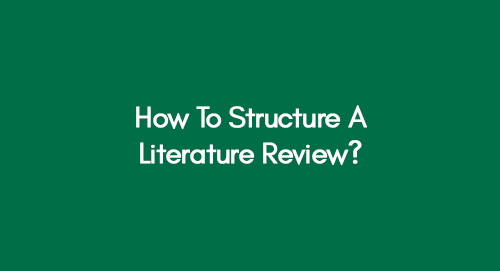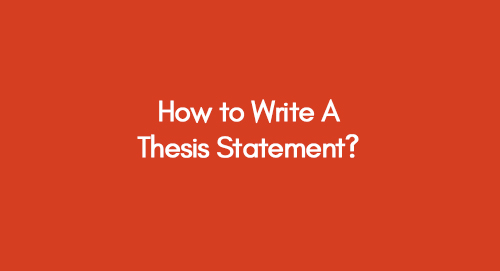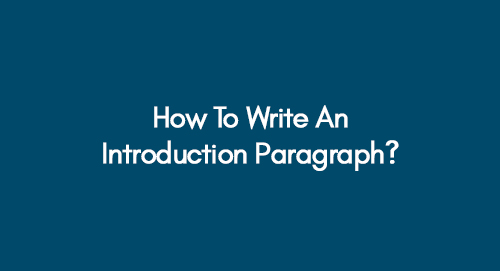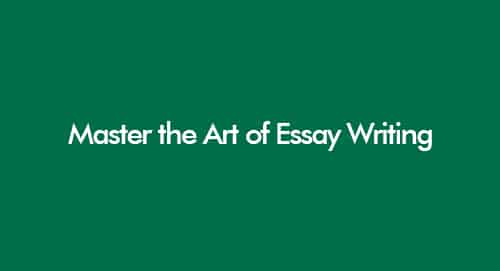
How to Structure a Literature Review: Scholarly Tips and Techniques
October 27, 2022
How to Write A Thesis Statement? Expert Tips and Examples
October 27, 2022The introduction paragraph is a crucial aspect of writing that sets the initial impression of the topic. It provides background information and highlights the key points. The introduction paragraph's tone should be engaging and encouraging to the reader. Because a well-written opening paragraph can have a positive impact on readers to continue reading.
Introduction paragraph: what to include and what not to include?
Catch Your Readers’ Attention Technical Words
Background Information of Your Topic Your Own Point of View
Describe the Central Point
Here, we explain everything you need to know to write the best introduction, such as what to include and a step-by-step process.
You may also review the following links;
How to Write a Dissertation Introduction?
How to Write an Introduction for Research Paper?
The following guide will provide a guide to write comprehensive introduction step-by-step:
Three Main Elements to Cover in the Introduction
In any academic paper, three main elements are always present in the introduction paragraph, whether it is an essay or a research paper. These elements are the hook, the thesis statement, and the outline of what will be covered in the paper. Let's take a closer insight at each one:
Learn How to Write a Research Project: Tips and Examples
1. The Hook
The first element is the hook. It grabs the reader's attention and makes them want to keep reading. It can be a quote, a statistic, a fact, or anything else that will pique the reader's interest. For instance, let's say you're writing a paper on the effects of climate change. A good hook might be: "Climate change is the single biggest threat to our planet—and we're not doing nearly enough to stop it."
2. The Thesis Statement
The second element is the thesis statement. That is where you state your main argument or claim. Everything else in your research paper will revolve around this central idea, so it's important to get it right. Going back to our climate change example, a good thesis statement might be: "Despite its well-documented dangers, climate change continues to be ignored by governments and business leaders around the world."
3. Outline of What will be Covered?
The third and final element is an outline of what will be covered in your paper. This gives the reader a brief overview of everything they can expect to find in your article.
It might look something like this for our climate change paper: "In this paper, I will discuss the dangers of climate change and why it continues to be ignored by those in positions of power."
What Details Are Necessary for the Introduction Paragraph?
For formal papers, the Introduction includes all of the following components or as many as are relevant to the topic:
- Who and what is the paper about?
- Where the problem occurred, and when the concept or ideas first happened?
- Relevance of the issue to your inquiry.
- How are the outcomes, procedures, and ideas carried out?
Discover How to Write an Executive Summary Here
How to Properly Structure the Introduction Paragraph?
As a student or researcher, writing comes in very handy. Knowing how to write an introduction paragraph that hooks the audience will depend on how well you structure the introduction paragraph.
- Introduce the topic of your paper.
- State your thesis or main argument.
- Give some background information on your topic.
- Define any key terms or concepts.
- Summarize the main points of your paper.
- Preview the structure of your paper.
- Offer a glimpse into the remaining parts of your paper.
- Provide an overview of the opposing arguments to your paper.
- Conclude your Introduction with a strong statement or call to action.
- Make sure to proofread and edit your Introduction before submitting your paper.
Learn the Best Way to Master Your Introduction Section
Aims of a Satisfactory Introduction Paragraph
1. An Overview of the Topic
The first aim of a strong introduction paragraph is to give an overview of the topic. This can be done in several ways. For example, you could provide a brief definition of the topic.
Explore How to Write an Introduction for the Research Paper
Or you could describe how the topic relates to other fields or subjects. Additionally, you could explain why the topic is important or interesting. Whatever approach you take, make sure that your overview is clear and concise.
2. Stating Main Points
The second aim of a strong introduction paragraph is to state the main points that will be discussed in the body. These points should be clearly stated in your thesis statement. Your thesis statement should be located at the end of your introduction paragraph.
In addition to stating your main points, your thesis statement should also preview your supporting evidence. This will give your reader a sense of what they can expect from the rest of your paper.
3. Providing a Roadmap
The third aim of a strong introduction paragraph is to provide a roadmap for the rest of the paper. This means that you should briefly mention each section or subsection you will discuss in your paper. Doing this will give your reader a clear idea of what to expect and where they can find specific information.
4. Setting the Tone
A strong introduction paragraph's fourth and final aim is to set the tone for the rest of your paper. The tone is how you communicate your attitude towards the subject matter.
For example, if you are writing about a controversial topic, you may want to adopt a more serious tone. Alternatively, if you are writing about a lighter topic, you may want to adopt a more playful manner. Whatever approach you take, ensure that your tone is consistent throughout your paper.
Practical Expert Suggestions
The following suggestions will provide you with an expert guide to writing the best introduction section:
Find a Step-by-Step Guide for Writing an Introduction for a Report Writing
1. Introduce the Topic
The introduction paragraph is to introduce the topic that you will be discussing. This should be done in an interesting and engaging way, as you want the reader to want to continue reading. You may want to start with a brief overview of the topic, followed by some more specific information.
2. Establish Your Position
The Introduction's purpose is to establish your position on the issue at hand. This will be your thesis statement if you are writing an argumentative essay. In other types of essays, your position may be stated more implicitly. Regardless, the reader must know where you stand on the issue from the start.
3. Provide Background Information
It will help give context for the rest of your essay and help the reader better understand what you are discussing. This background information can include historical information, statistics, or other relevant data.
4. Introduce Your Sources
If you are using any outside sources in your essay, it is important to introduce them so that the reader knows where they can find them if they want to read them for themselves. You should also briefly explain how you are using these sources in your essay.
5. Introduce Your Main Points
It will offer the reader an idea of what they can expect from the rest of your essay and help them follow along more easily. You may want to enumerate your main points here or simply list them in bullet form.
6. Give an Overview of Your Essay Structure
Outline how the rest of your essay will be organized so that the reader knows what to expect. This can be done by listing the main points you will be discussing in each section or by briefly describing each section.
7. Conclude with a Hook
The final purpose of an introduction paragraph is to conclude with a hook. A hook is a sentence or two that catches the reader's attention and makes them want to continue reading. This could be done in several ways, such as with a surprising statistic, a thought-provoking question, or a relevant quotation.
Dos and Don'ts While Writing an Introduction
Dos:
- Start with a hook. This can be a quotation, an interesting fact, or a rhetorical question.
- Give background information on your topic, so the reader understands what you will be discussing.
- Narrow your focus so that you can adequately address your topic in the space allotted.
- State your thesis clearly and concisely.
- Use transitions to move smoothly from one point to another.
- End with a sentence that will leave the reader wanting more!
- Check for grammar, spelling, and punctuation errors.
- Make sure your introduction paragraph is not too long or too short – just one well-developed paragraph will do!
- Re-read your introduction paragraph after you have finished writing the rest of your paper to make sure it still makes sense in light of everything you have discussed.
- Get feedback from a trusted friend or colleague before submitting your work to ensure your Introduction makes sense and engages the reader effectively.
Don’t:
- Start with a dictionary definition – this is clichéd and does not engage the reader.
- Use generalities – get specific!
- Make excuses for why you are writing on this topic or are not more expert on the subject matter – this will make you sound unconfident and unsure of yourself, neither of which qualities you want to convey in an academic setting!
Conclusion
A well-written introduction paragraph is crucial to capturing your reader's interest and orienting them to what they can predict from the rest of your paper.
Explore the following topics to learn more about how to write an introduction paragraph.
Contact Premier Dissertations to write a striking dissertation introduction for your next academic piece.
Get 3+ Free Dissertation Topics within 24 hours?




























